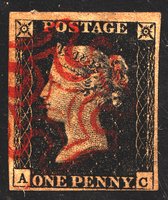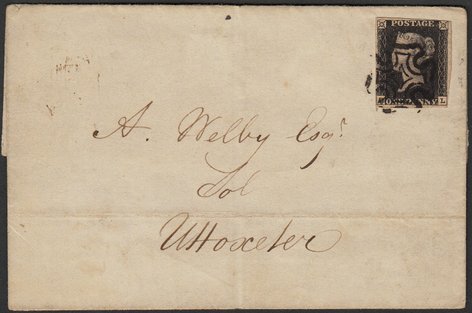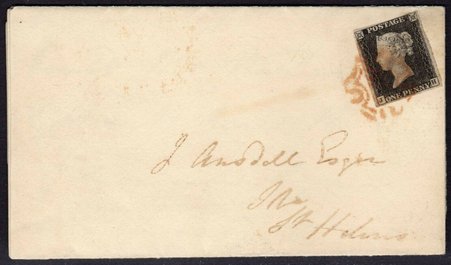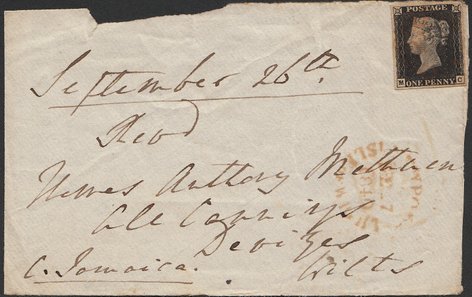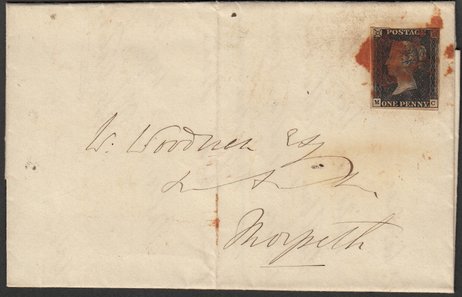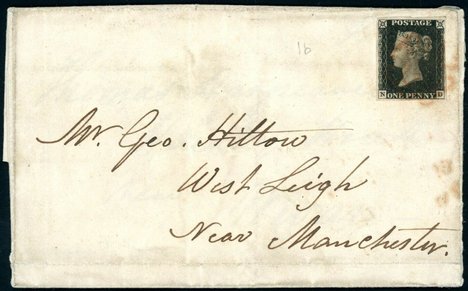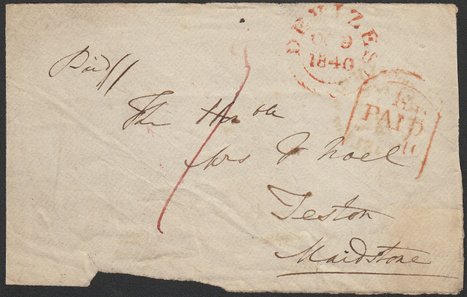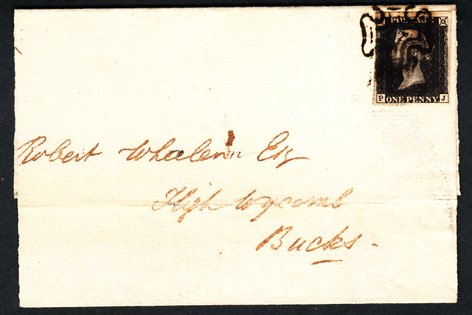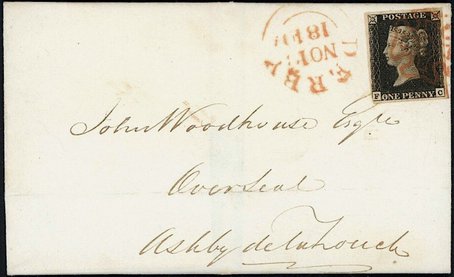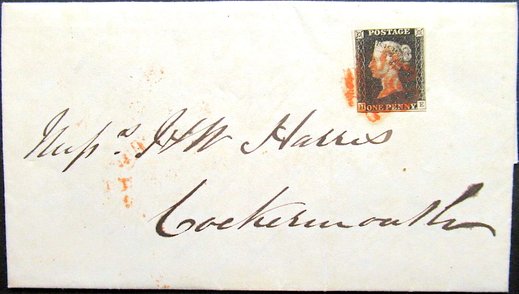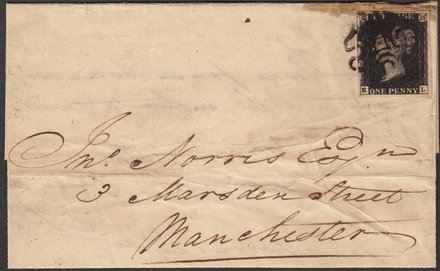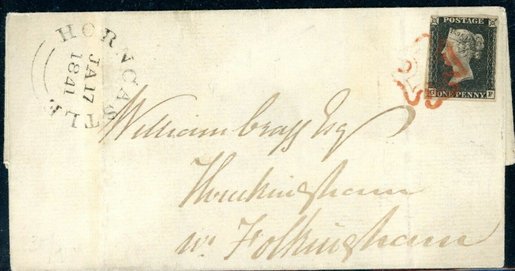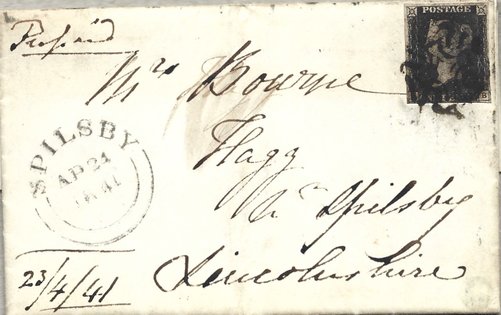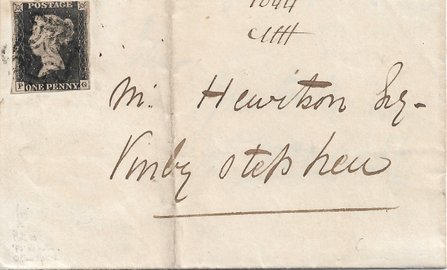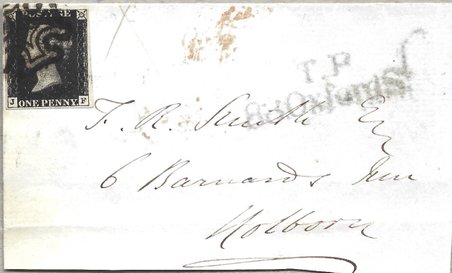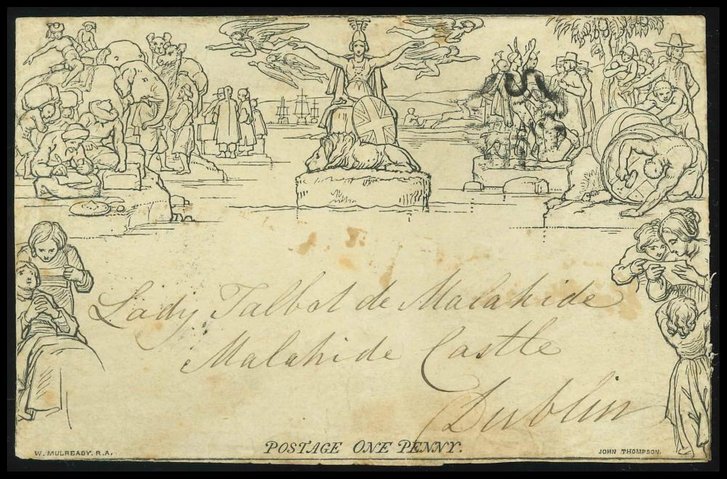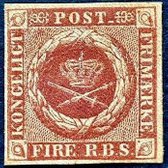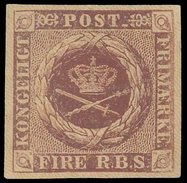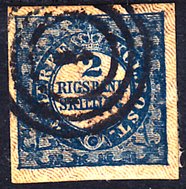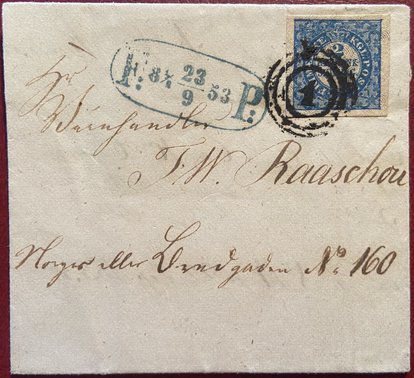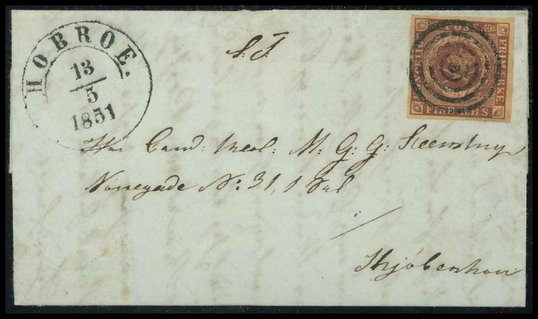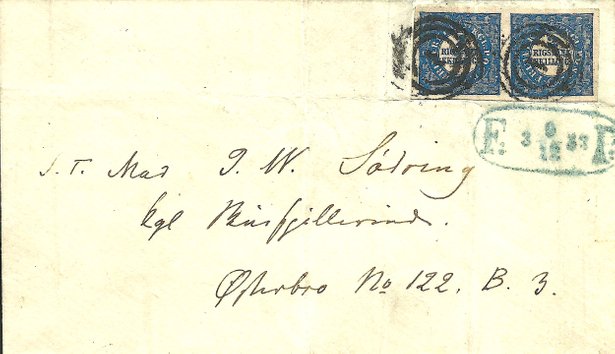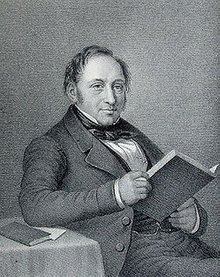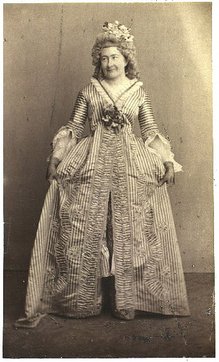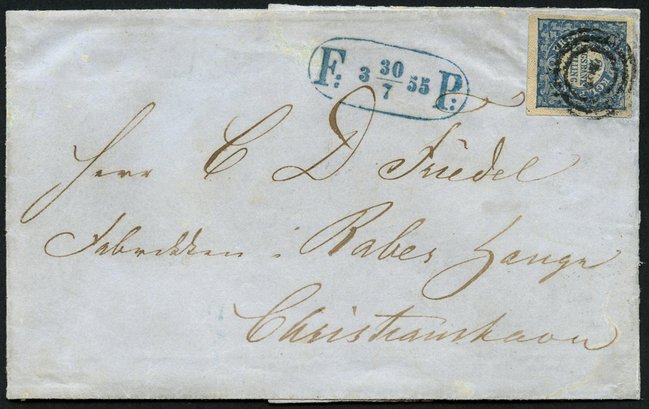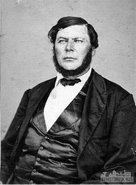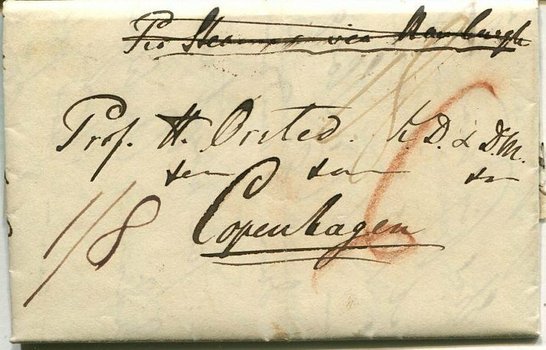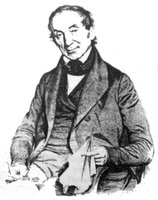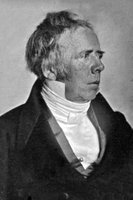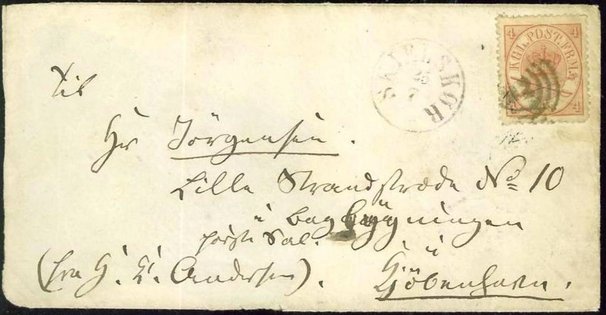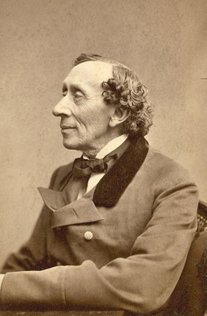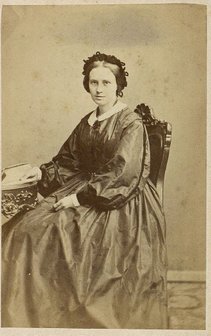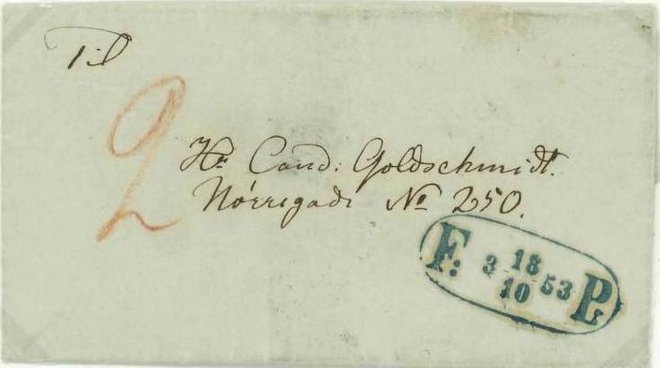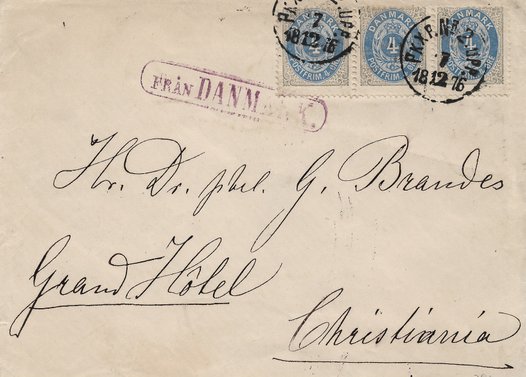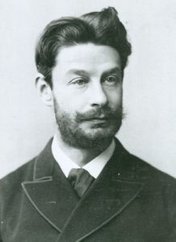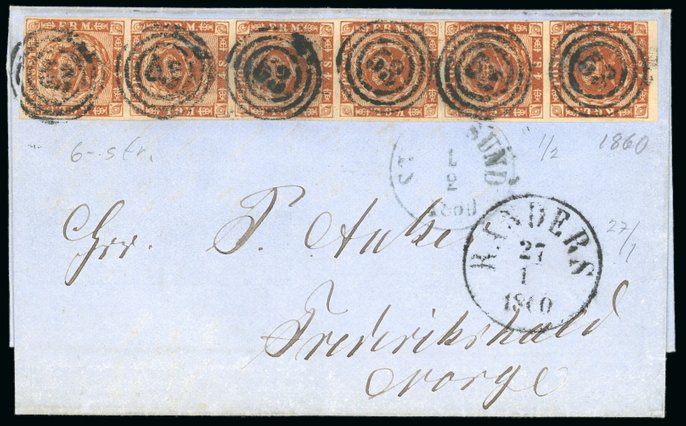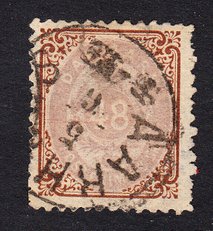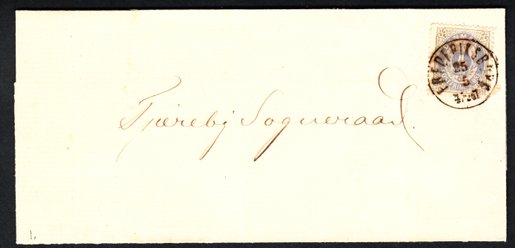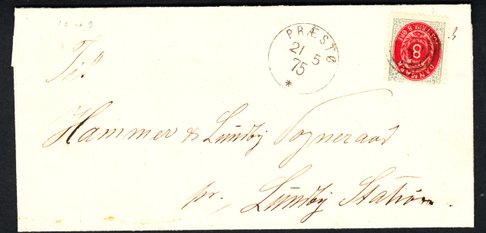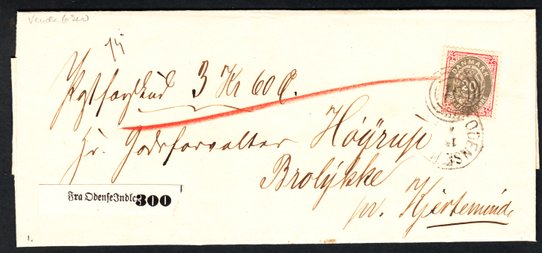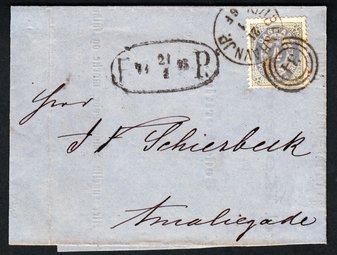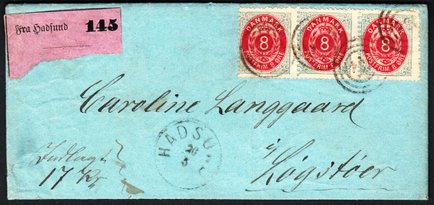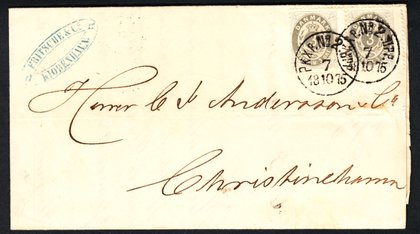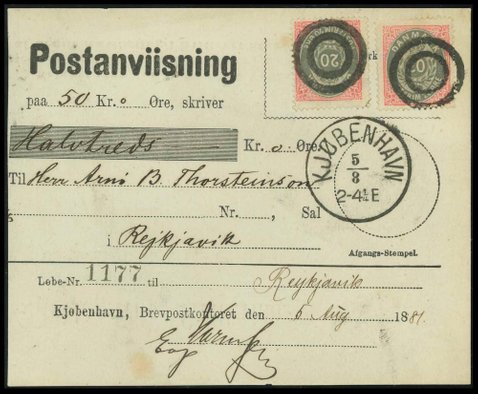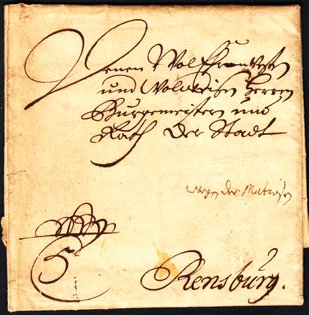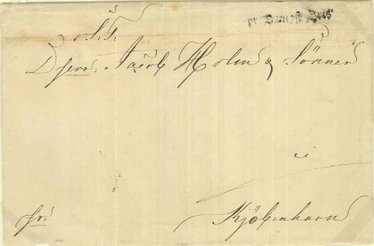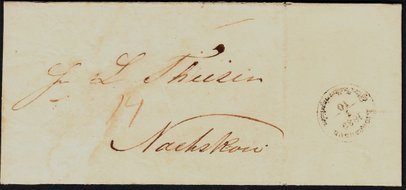Stamp Collecting
I have been collecting stamps from about the age of ten. My first collecting area was stamps and letters from Denmark, and much later I began to collect the stamps of the Netherlands Indies. In recent years I have become serious about collecting and have begun to exhibit my collection at international stamp shows.
Although my main focus is on classic Netherlands Indies stamps and postal history, I also collect other areas and show a few stamps and letters from my collection below.
As you may notice, I have a weakness for firsts! I like the earliest stamps from the time when the issuance of stamps served real postal needs and was free of speculation; this was an era of purity in which we find no provoked, philatelic usages, an era when stamps were cut from a sheet with scissors and not torn along rough and often ill-centered perforations. In this early period folded lettersheets were the norm, not envelopes as we know today, and the correspondence is often preserved inside, allowing us to gauge the concerns and writing styles of people who are no longer.
So what's the fascination of stamp collecting? Every collector will feel the answer to this question differently, but I can point to a few attractions for me, some of which would be the joy of handling (and possessing) old and original historical documents; the joy of hunting, hoping always to find the rare, overlooked and precious stamp; the activity of researching about postal history; and the competitive and social dimension to exhibiting my collection at stamp exhibitions. But more than that, far more importantly, stamp collecting for me is a way to create order out of chaos. Lord knows there are very few things in this life that we can really, truly control, but in stamp collecting we can source an enormous material from a hundred disparate sources (stamp auctions, internet shops, stamp markets, stamp clubs, exchange with other collectors, and so on) and we can bring together and display our very own material, study and analyze it, fill in the gaps, in order to tell and document precisely the story that we are interested in. Stamp collecting is complete freedom to do whatever we want, as the display on my pages here show!
The Penny Black
The Penny Black, officially issued for sale 6 May 1840, is of course the Mother of all stamps. The design shows the profile of the rather toothsome young Princess Victoria and it was developed by Sir Rowland Hill as part of his proposal in 1837 to reform the British postal system. The stamp, a British cultural icon, is not very rare; 68.8 million copies were printed and many were saved. In the era before telephone and instant messaging, people in the UK welcomed the uniform letter rate of one penny and sent a letter with a stamp if they needed to convey a brief note to a solicitor, renew a newspaper subscription, or invite an acquaintance over for a cup of coffee. The stamps were imperforate and were cut with a pair of scissors from a sheet of 240 copies. I have a small collection of the stamp on letter sent to different towns in England.
The Penny Black was printed from eleven different plates. This is a copy from plate 2, which, together with plate 1a, was used to print the stamp for the first day of use 6 May 1840.
the Penny Black (plate 6) on a complete letter sent from Cambridge to Uttoxeter in Staffordshire February 22, 1841. The stamp was cancelled by the black Maltese cross postmark which was in general use from February 1841.
Plate 7. Sent from Liverpool February 8 1841 to St Helens in Merseyside in the North West of England. The stamp is cancelled by the red Maltese cross.
Plate 5 used October 1840 cancelled by a red Maltese cross postmark which was over-inked and left an indistinct, oily smudge. The letter was sent to the market town of Morpeth in Northumberland.
Plate 1b (the hardened and longer wearing version of the first plate) tied to letter by a faint and very late use of the red Maltese cross. Sent from Chorley in Lancashire 19 Feb.1841 roughly 20 km south to Mr George Hilton in West Leigh, a suburb of Leigh, just west of Manchester.
Penny Black plate 4 (the so-called 'spotted plate', with clear dots around the letter M) on letter from Newport, Isle of Wight, September 27 1840 to Devizes in Wiltshire in South West England. The letter was re-used and re-addressed in Devizes October 9 and forwarded unpaid to Teston near Maidstone in Kent. On the back is the pen marking "1" for the one penny charge to Teston.
Penny Black plate 5 on cover from February 1841 to High Wycombe in Buckinghamshire. The black Maltese cross cancellation was in general use from 10 February 1841. However, the black cross was used experimentally on mail sent within London from 31 August 1840.
My earliest Penny Black cover, dated June 29, 1840. Plate 3, but could also be plate 2 (they are hard to differentiate). From the beautiful Georgian town of Whitehaven on the west coast of Cumbria to Cockermouth - a distance of about 20 km.
Penny Black plate 6 cancelled by the red Maltese cross on a letter from Derby 18 November 1840 to Overseal. Overseal is a village in the south of Derbyshire, close to the old market town Ashby de la Zouch, which got its rather unusual name from the La Zouche family from Brittany, who took possession of the town sometime after the Norman Conquest. The distance from Derby to Overseal is less than 20 km.
Letter with Penny Black plate 7 from Horncastle in Lincolnshire to Threekingham near Folkingham 17 January 1841. Showing the clear date stamp of Horncastle in black and the red Maltese cross cancellation. The letter travelled the 40 km south to the post office of Folkingham from where a local postman brought it a further 3 km to the small village of Threekingham, whose history dates back to Anglo-Saxon times (the name meaning "the home of Tric's people", Tric being a Saxon personal name or a name of a tribe).
Plate 8 on letter to Manchester February 1841. The stamp has the so-called "O" flaw which is a small white mark extending from the bottom line upwards between the letters "O" and "N" of "ONE ". The "O" flaw is common on plates 7, 8, 9, and 10.
Penny Black plate 10 (with the O-flaw and a major re-entry in top right star) cancelled by the black Maltese cross, on letter from Feb. 1841. The letter travelled in Cumbria, from Carlisle to the medieval market town Kirkby Stephen 60 km to the south-east. In this town is found the St Stephen’s parish church. The letter was sent to a Mr Hewitson; the solicitors Hewitson are still practising in Kirkby Stephen today. It is uncommon to see the stamp on the left side of the cover and this was contrary to postal regulations.
Plate 5 on April 1841 letter from Long Acre in London’s West End to Hagg near Spilsby in Lincolnshire. Stamp cancelled by the black Maltese Cross. A rare provincial usage sent to Mrs. Bourne in Hagg, a small hamlet of just a few houses and barns.
Plate 5 on London cover from Oxford St to Holborn. October 5 1840. London used the black Maltese Cross on an experimental basis from 31st August to late November 1840, at a time when the red cancel was the norm. Sent from the receiving house 88 Oxford St to Barnard’s Inn, which was a major Inn of Chancery, that is a school for law students before they went on to work in the Inn of Court.
The 1840 Mulready printed lettersheet with a value of one penny. This prepaid stationary was valid from 6 May 1840, the same time as the penny black postage stamp. It was illustrated by the popular Irish painter William Mulready and engraved by John Thompson, one of England's finest engravers. The envelope was intended to spread models of beauty over the whole face of the country and amongst all classes of the people. Rowland Hill, postal reformer and the man who proposed the penny black adhesive stamp, believed that the Mulready envelope would be more popular than the postage stamps, but the postage stamp prevailed and the elaborate design of the Mulready envelope was widely abused and ridiculed. From November 1842 the remaining stock of the envelope was withdrawn and destroyed.
My envelope was struck by a black maltese cross cancel and sent to Lady Talbot de Malahide resident at Malahide Castle near Dublin. This was probably the wife of Richard Wogan Talbot, the Baron Talbot of Malahide from 1834 to 1849.
An article in Gentleman's Magazine Jan/June 1840 described the Mulready envelope as representing
"Britannia in the act of dispatching four winged messengers. The figures on each side of her are groups emblematical of British commerce, and communication with all parts of the world.
On the right are East Indians on elephants directing the embarkation of merchandise; next Arabs with camels laden; next Chinese; on the left, American Indians concluding a treaty, and negroes packing casks of sugar. The whole design occupies rather more than an inch in width along the face of an ordinary envelope.
In what may be called the foreground on the one side, a young man is reading a letter to his mother, whose clasped hands express her emotion at its contents; on the other side is a group of three figures, each one eagerly pressing around to read, or at least to catch a sight of the welcome letter."
The stamps of Denmark
The first stamp of Denmark was issued in April 1851, and although the classic issues of Denmark are not my main area of collecting, I occasionally acquire some stamps if the quality appeals to me or the historical importance. I show a few stamps and letters from my collection below.
The Ferslew prints
The Ferlew prints of the 2 and 4 rigsbank skilling are the mother of all Danish stamps. They were printed on a warm, brownish paper with clearly visible burelage. A burelage is the intricate network of wavy lines printed as a background to the main design to prevent counterfeiting. On the subsequent (and more common) Thiele prints the burelage is still visible but not nearly as distinct as on the Ferslew issues.
The first stamp of Denmark, 4 rigsbank skilling 1851, printed by Ferslew. This stamp is unused with no original gum. This is one of the finest and most even-margined copies that we have.
2 rigsbank skilling, Thiele print, used with the normal ring cancellation number 1 of Copenhagen.
2 rigsbank skilling of the Ferslew print. This stamp was issued in 1851 for use within the city of Copenhagen (specifically within the city ramparts of Copenhagen). The blue oval postmark on this piece indicates delivery by the city foot post July 28 1852. The stamp was cancelled by the mute ring cancellation that was in use during the first year of the Danish stamps.
A letter with a beautiful and wide-margined pair of the 2 Rigsbankskilling, Thiele print. Plate I, position 82-83. Sent 9 December 1853 to a recipient in Østerbro outside the old city gate of Østerport. Delivered by the foot post of Copenhagen.
Johan Ludvig Heiberg
Julie Weber Sødring
The letter was sent from Johan Ludvig Heiberg, the Danish playwright, poet, literary historian and director of the Royal Danish Theater, to Madame I. W. Sødring. Julie Weber Sødring (1823-1894) was one of the leading and most beloved Danish actresses of her time. She debuted with the Royal Danish Theater in 1843, and was employed there full-time from 1847. Sødring performed in national comedies, especially by Holberg, but also by Hertz, Hostrup, and H. C. Andersen. She was one of Denmark's most popular interpreters of Holberg. She never performed outside Denmark, and she never used make-up, but relied entirely on mimicry, eyes, and intonation to carry her parts.
This letter is an empty lettersheet, but it is signed J. L. Heiberg on the reverse. I speculate that it may have contained a manuscript for a dramatic performance from Heiberg, who was then the Director of the Royal Danish Theater.
H. C. Andersen wrote a poem to Sødring:
Til Fru Julie Sødring:
Du kommer som Digtningens gode Aand
Og lægger paa den Velsignelsens Haand;
Du virker med Hjertet og med Humeuret,
Lunet straaler i Skjønhedssløret.
Christian Ditlev Friedel, 1817-1882.
2 RBS Thiele, type 6, pos. 76. On letter to Christian Ditlev Friedel in Rabes Have in Christianshavn. Christian Friedel was
born in Horsens and owned Glostrup Bryggeri. In 1851 he founded Rabes Have brewery in Christianshavn, which was one of Copenhagen's largest breweries, at the time bigger than Carlsberg. He emigrated to the United States in 1855 with his three sons.
Nathaniel Wallich, 1786-1854, Danish surgeon and botanist.
Hans Christian Ørsted, 1777-1851, Danish physicist and chemist.
Letter from the Danish botanist Nathaniel Wallich to Professor Ørsted in Copenhagen. The content of the letter relates to the sharing of academic articles. Wallich posted the letter on 24 September 1832 from the London receiving house in 438 Oxford Street and he paid 1 shilling 8 pence. The letter went by steamer to Hamburg and from there to Ørsted, who then lived in Studiestræde 97 in central Copenhagen. He had to pay 6 skilling on delivery.
A letter from the Danish author Hans Christian Andersen of July 1867. Note the signature 'H. C. Andersen' bottom left. The letter is an envelope only and does not have the content (which is kept in the Royal Library in Copenhagen). The letter was sent to Andersen's friend, the young gentleman Hans Christian Jørgensen in Copenhagen. (see also the description in my 'Curious Miscellaneum').
H. C. Andersen
Mathilde Fibiger (1830-1872)
Danish novelist and campaigner for equal rights for women. Her first novel Clara Raphael was partly based on her own experience as a private tutor and with its focus on women's emancipation it sparked much controversy in her time and made her the first public figure in Denmark to champion women's rights.
Letter from Mathilde Fibiger to Meir Goldschmidt 18 Oct. 1853. This letter was written shortly after the publication of Clara Raphael, when Fibiger had moved to Copenhagen to work as a writer. But she lived in poverty and in this letter to the author Meir Goldschmidt she complains of not being able to afford the 2 skilling for a postage stamp.
The letter was sent unpaid and was delivered by the Copenhagen foot post. Goldschmidt had to pay the fee of 2 skilling which is noted in red on the letter front.
I have transcribed the full letter, which tells a sad story of Fibiger's life in abject poverty at the age of twenty-three and her problems with paying the rent to her landlady. But it also shows the wit and good humour with which she dealt with her plight. Click HERE to see and read the correspondence from Fibiger to Goldschmidt.
Letter to the Danish critic and scholar Georg Brandes in Norway franked with strip of three of the 4 øre bicoloured stamp (probably print 7) cancelled by a Swedish railway mark 7.12 1876.
Georg Brandes was a cultural radical constantly in uneasy relationship with the conservative establishment of his time. From 1872 he published his important Main Currents in 19th Century Literature which modernized the literary scene and led to the breakthrough of realism and the naturalist movement in Scandinavian literature.
Georg Brandes, 1842-1927
Brandes travelled widely in Europe to learn about intellectual movements and national literatures. In late 1876 he stayed at the famous Grand Hotel in Christiania (now Oslo) to where this letter was sent. This hotel opened in 1874 and Henrik Ibsen, Knut Hamsun, and Edvard Munch were frequent visitors.
Randers 1860 to Frederikshald in Norway, paying the 24sk rate for steam boat that was valid from July 1854 to March 1860.
The bicoloured issues 1870-1902
The so-called bicoloured stamps issued in Denmark from 1870 are surely one of the world's most complicated and challenging stamp issues. Some of the most common bicoloured stamps, the 4 and 8 ore, were printed in more than 100 different prints. The frame ornament and the oval were printed separately and in two different colours, and collectors distinguish between normal and thick frames, inverted frames, inverted watermarks d and different perforations. There exists also an enormous amount of frame and oval flaws. The study of these stamps may resemble a scientific study, and indeed many collectors approach it with scientific rigor! I am far from an expert in these issues, but they do fascinate me. I collect some of the earlier prints and especially the value 20 ore which was printed in seven separate printings. I show a few pieces from my collection here.
48 skilling, the highest value of the skilling stamps issued 1870-75. This stamp is a rare inverted frame; only two stamps in each sheet of 100 had the frame printed upside-down.
The first prints
4 øre print 1, one of the most beautiful uses I have seen of the first print, cancelled Frederiksborg 25/5 and sent to Tjæreby Sogneraad.
8 øre, print 1b pos. 9 (with large frame flaw in south frame), letter sent 21 May 1875 from Præstø to Lumby Station. The Præstø datemark is in a unique design known only from this town, and the 8 øre print 1b is perhaps my favorite print, identifiable by a striking, almost radiant blueish-gray frame ornament. This print is quite rare.
20 øre print 1a on undated money order from Odense to Brolykke by Kerteminde on the island of Fyn. Unusually, the printing 1a of the 20 øre stamp was printed with a thick, inverted frame in a striking deep red color.
4 øre, print 1 on a printed matter sent locally in Copenhagen and delivered by the Copenhagen foot post 21 January 1875. The printed matter is dated in the Portuguese city of Porto 3 December 1874. A very early letter from the third week of the bicoloured øre issue.
8 øre print 1b, pos. B48-50, strip of three on money order sent from Hadsund in the eastern part of Jutland to Løgstør.
3 øre print 1. letter from Copenhagen to Christinehamn in Sweden, cancelled by Swedish postmark 7 October 1875.
